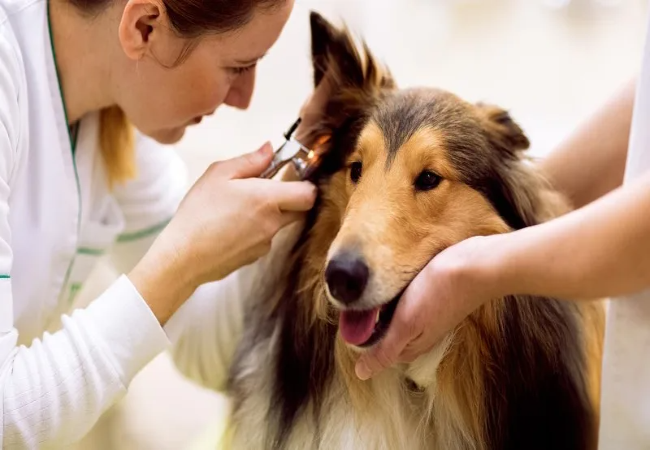Vet Guide to Deafness in Dogs 2025🐶🩺

In this article
Vet Guide to Deafness in Dogs 2025🐶🩺
By Dr. Duncan Houston BVSc
Deafness in dogs is the partial or complete loss of hearing. Depending on the cause, it may be congenital or acquired and reversible or permanent. Despite common perceptions, deaf dogs can live full, loving lives with the right support.
📍 Causes of Deafness
- Congenital/genetic: Common in white-or merle-coated breeds like Dalmatians, Cocker Spaniels, Australian Cattle Dogs – irreversible sensorineural deafness.
- Infections/ear disease: External, middle, or inner ear infections may block hearing or cause permanent damage if untreated.
- Trauma or ototoxic drugs: Head injuries or medications (e.g., cisplatin, furosemide) can induce hearing loss.
- Noise-induced or age-related: Loud noise exposure (e.g., gunfire) and presbycusis (age-related degeneration) are common in older dogs.
- Systemic or neurologic: Conditions like hypothyroidism, Cushing’s, tumors, or meningitis may affect hearing.
👀 Signs of Hearing Loss
- No response to verbal commands or high-pitched noises (whistles, squeaky toys).
- Startled easily, head tilting, barking more loudly.
- Difficulty waking up, sleeping through prompts.
- Ineffective ear movement during communication efforts.
🔬 Diagnosis & Testing
- Physical exam: Check for visible ear issues, debris, or infections.
- BAER test: Brainstem auditory evoked response testing provides a definitive evaluation, especially in puppies.
- Hearing screening: Observational sound response tests (clapping, stomping, squeaky toys).
- Advanced diagnostics: Imaging (CT/MRI) and bloodwork for underlying disease, where indicated.
💊 Treatment & Management
- Treat infections: Ear cleaning, antibiotics, or antifungals may restore hearing if done early.
- Discontinue ototoxic drugs: Consult your vet to adjust or switch medications.
- Supportive care: In congenital or irreversible cases, focus on safety, communication tools, and enrichment.
🛡️ Lifestyle Adaptations
- Use hand signals, light taps, or vibration collars for communication.
- Always leash or fence deaf dogs—it protects them from silent dangers.
- Add “deaf dog” patches or tags to collars for awareness.
- Train with positive reinforcement, consistent signals, and vibration cues.
- Maintain routine ear care to prevent infections and monitor skin health.
📈 Prognosis & Quality of Life
- Temporary deafness may improve with treatment. Permanent cases require adaptation.
- With training and safety measures, deaf dogs can thrive, be lively, social, and content.
- Regular check-ups ensure ear and overall health remain optimal.
✅ Dr Houston’s Veterinary Tips
- 🧪 Screen sound response early in puppies, especially predisposed breeds.
- 🩺 Treat any ear infection quickly to avoid permanent damage.
- 📅 Use BAER testing for confirmation before breeding decisions.
- 📋 Create visual and vibration-based training protocols for deaf dogs.
- 🏠 Ensure a secure environment with fencing and supervision.
If your dog shows unresponsiveness to sounds, head tilting, or sleeping through loud noises, consult with a vet or via AskAVet.com for diagnostic guidance.🐾❤️






